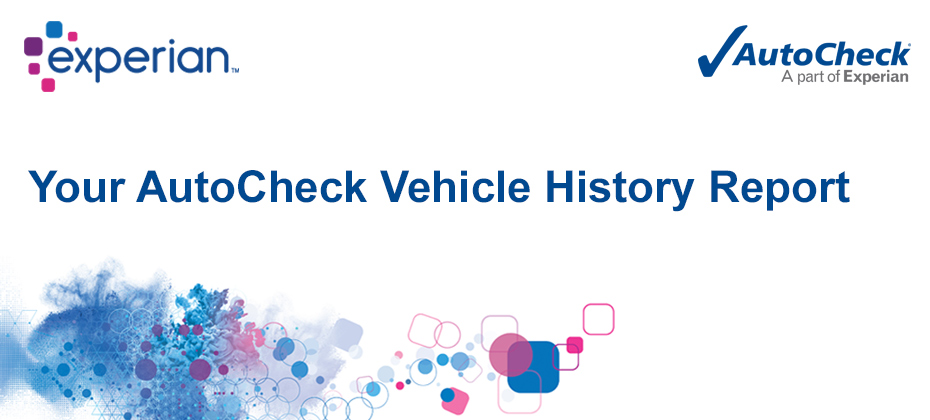
Automotive Blog
Welcome to the Experian Automotive Blog. Keep current on best practices and trending topics for the Auto industry.

Your local auto market changes every day. Today’s challenge is securing the inventory needed to keep new and repeat customers coming in the door. Tomorrow it might be finding the right customers for the inventory you have secured. Either way, understanding the competitive activity in your market is key to developing ongoing strategies for success. Important competitive insights include the ability to: • Gauge your performance against the competition by identifying each unit registered in your market • Discover what vehicles are popular among your consumers by make and model • Identify the key characteristics of customers in your area. In yet another benefit, Experian provides our AutoCheck Elite dealer clients with complimentary access to in-depth market reporting, including these comprehensive reports: The AutoCount Market Ranking Report Learn whether you’re getting your share of vehicle sales in your local market’s top zip codes. This report: • Lists all sales activity within a 15-mile radius of your dealership • Provides unbiased monthly information from state DMVs on new and used vehicle sales • Includes access to our web-based portal to provide instant access to a variety of customizable reports • Identifies vehicle registration by ZIP code to pinpoint marketing opportunities The AutoCount Vehicle Model Ranking Report Stock the right inventory by learning what vehicles are popular among your consumers (see example below). This report: • Provides an expanded view of the dealership’s market, which leads to more informed decisions that maximize untapped profit potential • Track the top 25 new and used vehicles within a 15-mile radius of your dealership as well as the top gainers and losers in the market • Offers an easy-to-read graphical summary of critical market information, including lender ranking • Gives an unbiased scorecard of dealership performance in the local market to determine market share and competitive insight Having access to monthly DMV reports and analysis can help deliver a competitive edge to your dealership. To become an AutoCheck member today, contact us or call 1.888.409.2204.

The automotive finance market is beginning to level out to pre-pandemic trends in Q2 2021.

I woke up early this morning to get my run in on the treadmill before starting my day. As I listened to music on my Pandora account, I saw an advertisement for my local Ford dealer. Later in the week, I was streaming my favorite show, and on came an advertisement suggesting I service my vehicle at the same local Ford dealer. When I checked my email on Tuesday, I remembered I wanted to schedule my service. Then came the letter with an option to check the appraisal for my vehicle. Now, I am fully shopping!!! Why you ask? Because the marketing message across so many channels set the stage for my interest. According to Google, multi-channel users will have a 30 percent higher lifetime value compared to single channel users. As contemporary society grows more attached to streaming services, social media and their cell phones, it is imperative to market to consumers where they spend time. Why then do so many automotive marketing companies only offer direct mail and email? Simple− those two forms of communication have been around for decades and can be the most cost effective to provide. While direct mail marketing is effective, utilizing the power of social media, streaming services and other digital platforms effectively puts your message in front of consumers. While I can toss the letter on my desk for later reading, the video commercial during my television streaming cannot be set aside. Multi-channel marketing combines various platforms to amplify your campaign’s frequency and reach, creating more effective messaging. One channel is often not enough for a robust marketing campaign since audiences tend to frequent many different channels. Experian’s Automotive Intelligence Engine with Marketing Creative & Fulfillment executes the strategic marketing plan created in AIE with true multi-channel messaging. This end-to-end solution utilizes Experian’s world-class data to create a powerful, brand-specific marketing strategy that resonates with your buyers by reaching their inbox, mailbox, screen and desktop −where they spend the most time.

Have you ever wanted to ask a customer to sign an AutoCheck vehicle history report to indicate they have received and reviewed the report and they are aware of the status of the vehicle they are purchasing?

Experian’s Q1 2021 Automotive Market Trends Review revealed that some of the once-consistent new registration generational trends have reversed.

The AutoCheck® Elite program enables auto dealerships to better understand the vehicles in their market. And, right now, making strategic decisions about stocking the right inventory and marketing to the right consumers has never been more important.

In the Q1 2021 Market Trends Review, we explore the average age myth and highlight other ways to inform aftermarket strategy.

Expanded FCRA regulated data can help lenders extend more credit, and ensure consumers have access to affordable credit when they need it.

Experian's Q1 2021 State of the Automotive Finance Market report explores the benefits of leveraging both national and regional data when strategizing.

Trends can vary based on location. In the Q1 2021 State of the Automotive Finance Market report, we took a look at market share nationally and regionally.

AutoCheck® is a powerful vehicle history report that helps take the unknown out of the used car buying process, so you can confidently understand, compare, and select a vehicle that is right for you. Only AutoCheck vehicle history reports include the patented AutoCheck Score, which summarizes vehicle history data into an easy to understand ‘Score” along with an equivalent score range. The patented AutoCheck Score predicts the likelihood a car will be on the road in 5 years. It compares vehicles of similar age and class based on a scale of 1-100. The AutoCheck Score is based on a proprietary model to help you understand a vehicles predicted reliability as it pertains to age, number of owners, accidents and other vehicle history factors. Watch this video to learn more about the AutoCheck vehicle history report and how it can help you identify hidden damage and accident events to avoid costly mistakes. Contact us to learn more about becoming an AutoCheck subscriber.

As the used vehicle market continues to thrive, a vehicle history report is more vital than ever. There can be hidden risk associated with used cars. It’s important for dealers to ensure the safety of their inventory for car shoppers. This is why dealers need to consistently use vehicle history reports when acquiring vehicles from the auction. AutoCheck vehicle history reports include data from 95% of all U.S. Auction Houses, with most providing exclusive structural damage announcement information. We want to help dealers feel more confident in the used vehicles they bring into their inventory. Contact us to learn more about becoming an AutoCheck subscriber.

Experian’s Q4 2020 Market Trends Review takes a closer look at aftermarket trends, including the growing sweet spot.

In 2020, new trends emerged, driven by a continued shift in consumer preferences. Let’s take a closer look at how the industry fared during the year.

AutoCheck Buyback Protection is a policy that will compensate a consumer by buying back their vehicle under certain circumstances...